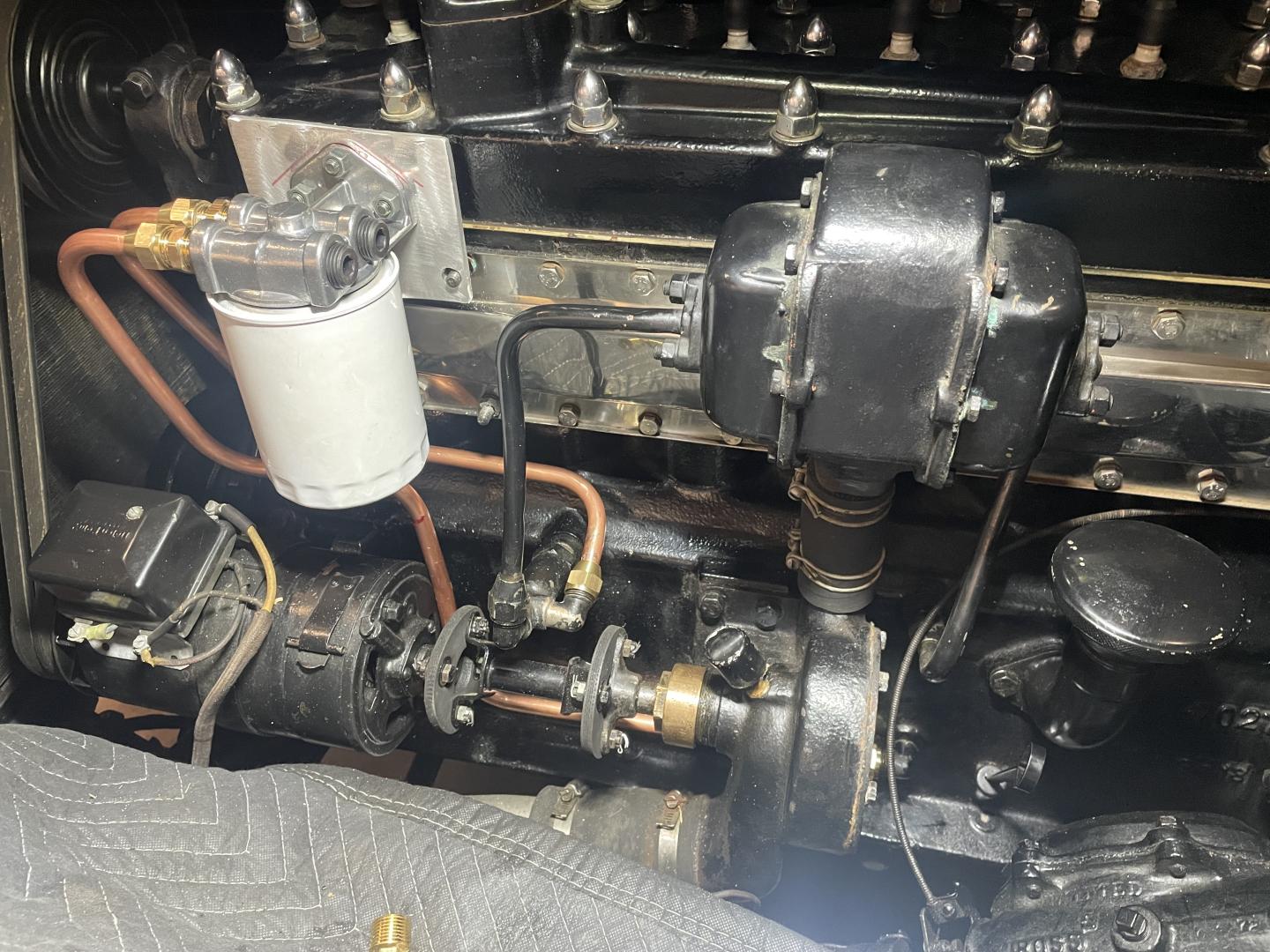- Home
- About Us
- Join/Renew
- Member Benefits
- Member Pages
- Log In
- Help
- Museum Store
Tagged: oil filter
On my car, a pipe connects the top of the filter to a fitting low on the block, to the rear of the water pump. A pipe at the bottom of the filter connects to another device attached to the block inside the water pump drive, and there seems to be a tee connection from here to the oil cooler.
Is the connection to the rear of the water pump the source from the oil pump, and is the device near the water pump drive the relief valve?
Randy, yes the fitting that screws into the oil gallery adjacent to the water pump driveshaft is the oil filter bypass regulator in case the oil filter is clogged.
Thanks, Jim. I will have to think about this.
<p style=”text-align: left;”>I understand the filter bypass is internal to the filter. The device near the water pump driveshaft is the oil pressure relief.
I also found the word INLET stamped on the top of the filter element. This orients me as to the flow.</p>
I am considering installing a modern filter so that explains my questions.
Sorry for not seeing this earlier. I don’t think there is a bypass in the original filter, at least I didnt see one in my ’36 Packard original. I did the conversion to hide a PH8A filter on my Packard years ago but didnt on my Pierce because changing the filter with the conversion was such a messy, iffy deal to get everything aligned and sealed again. Because of that I didn’t change the filter as often as I should have. The original filter is a copper tube spiral wrapped with a filtering cloth with less surface area than the more compact pleated PH8A if I remember correctly, PH8A’s do have an internal bypass. It was so common that at one point my Packard, ’60’s Chryslers and little Alfa all used the same PH8A ( why I remember the number).
The oil pressure regulator is mounted on the oil pump.
Thanks. I got the info about the internal bypass from some literature; maybe from the PAS service bulletins; that is all I know.
I have tested my modern setup; seems to be OK and oil pressure is same as before.

Nice setup from a practical standpoint for a car that is driven!
I should clarify that I think the Packard filter I took apart was an L8 and the Pierce is an L4, if I remember right. I don’t know what the difference is, maybe someone on the forum knows. I probably just added to the confusion.
On my Pierce I kept the original bits so it could be returned to original in the future. My oil cooler core leaked so I bypassed it. I think the main purpose of it was to reduce the swings in viscosity with temperature to help the hydraulic tappets, so I assume multi vis oil solves that issue without it.
My Packard had the same leaking oil cooler core problem but I had found a later 1938 flat plate design that has been trouble free. I had put peak temperature templaques on the cooler inlet and outlet pipes and after a hot 90+ summer I-5 drive at 65 mph they showed no difference in peak temperature, meaning the cooler was not doing much. Caveat however is I had a very tall rear end gear slowing the engine rpm down which is a big driver on oil temp.
The original SAE report by the Harrison engineer on the cooler function calls it a temperature regulator, not a cooler, as it’s role was also to warm the oil up quicker in cold temperatures. The straight weight oils could get so thick in the cold that they wouldn’t flow into the oil pump. The P-38 had that problem at the frigid temperatures of high altitude early in the war, the oil temp regulator doors wouldn’t react fast enough to reduced power and the oil would congeal in the oil cooler leading to engine failure. How’s that for trivia going off topic?
